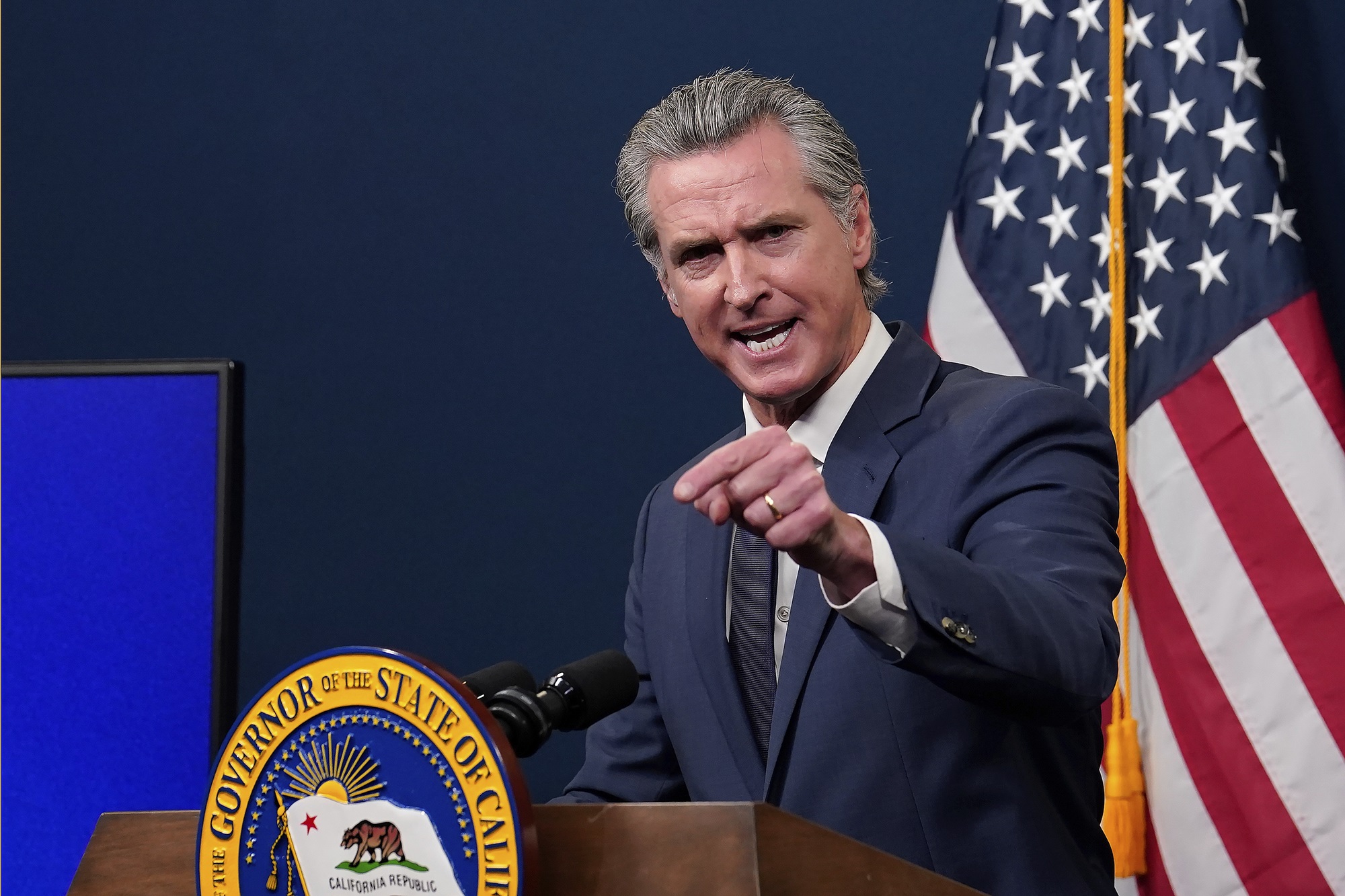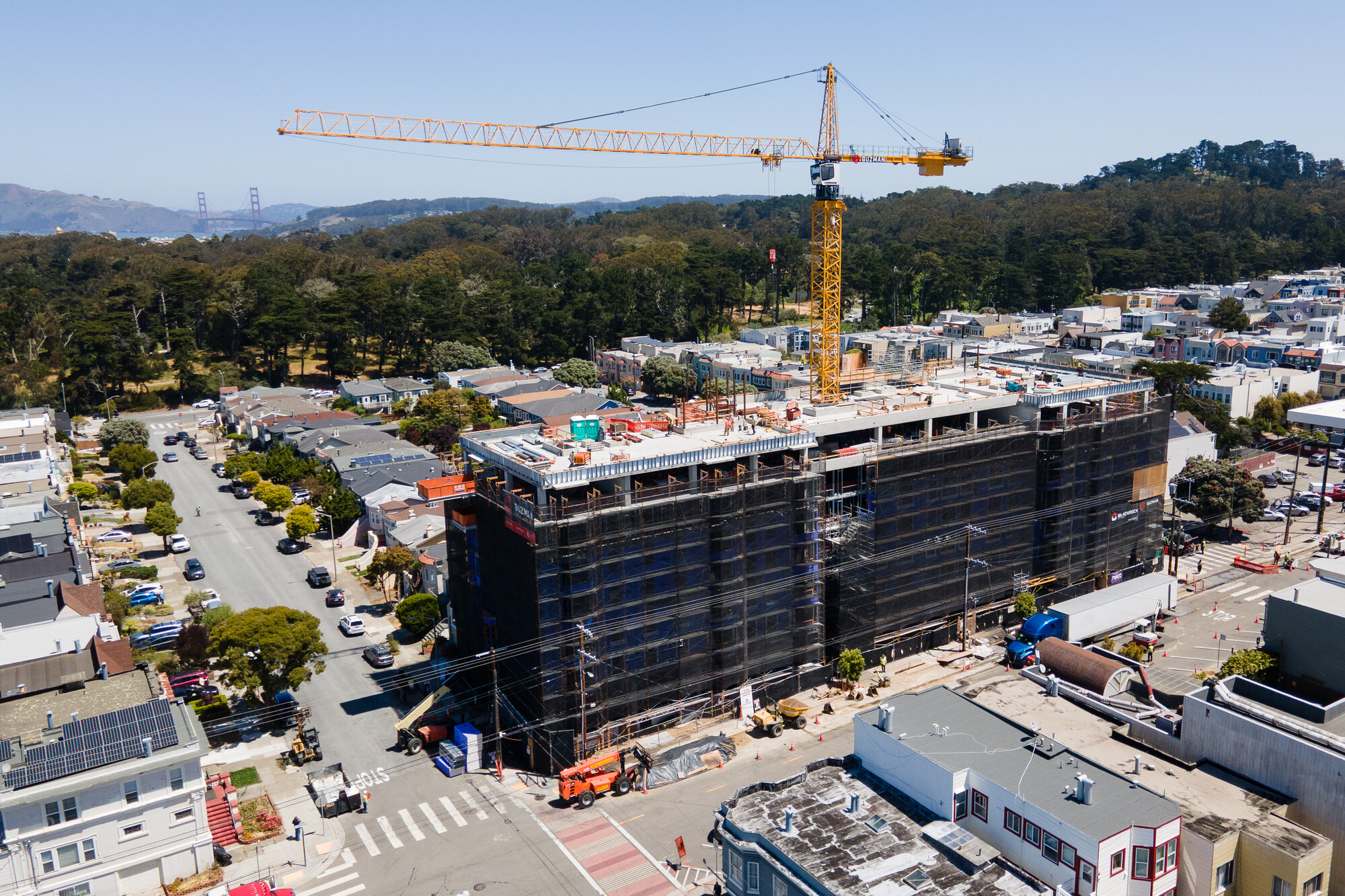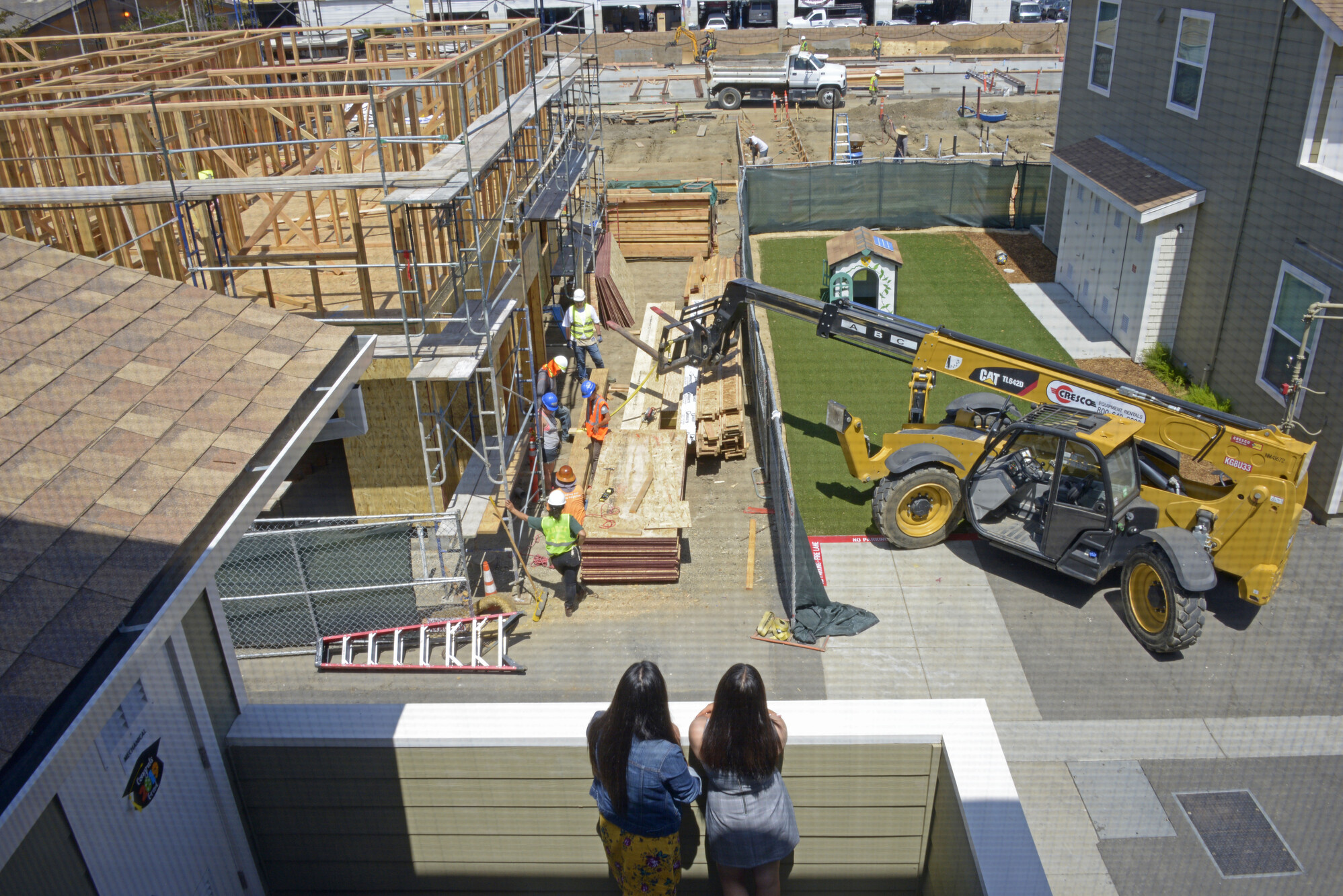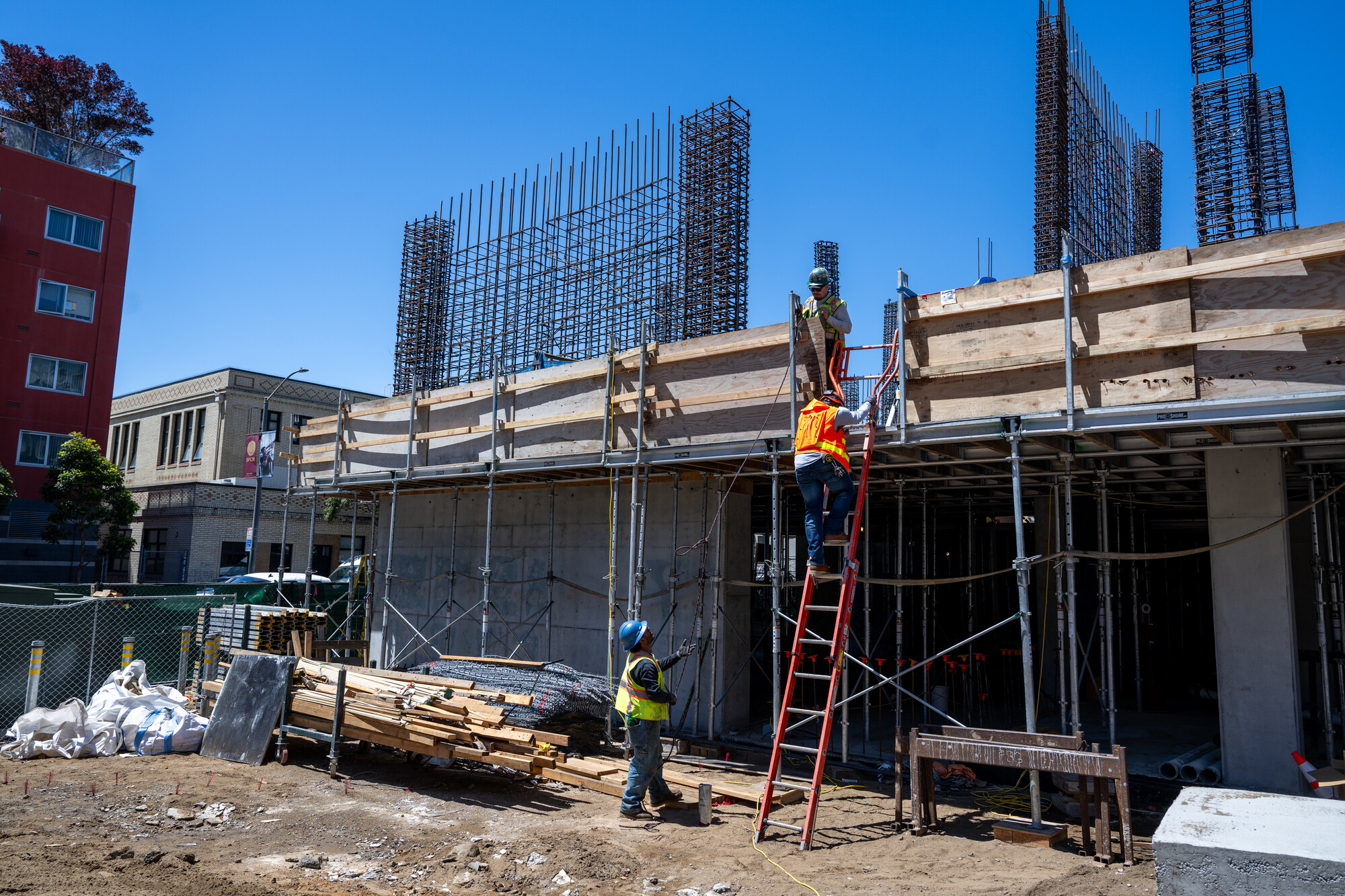California Lawmakers Approve Major Overhaul of Landmark Environmental Law
June 30, 2025

Gov. Gavin Newsom presents his revised state budget during a news conference in Sacramento, California, on Wednesday, May 14, 2025. Gov. Newsom threatened to repeal the state’s budget if lawmakers did not include two bills that aim to streamline environmental reviews for housing. (Rich Pedroncelli/AP Photo)
After weeks of tense negotiations with Gov. Gavin Newsom, California lawmakers on Monday passed two controversial bills that promise to make big changes to the state’s landmark environmental law to boost housing and clean energy projects.
The two bills — AB 609 from Asm. Buffy Wicks, D-Oakland, and SB 607, by Sen. Scott Wiener, D-San Francisco — were folded into addendums to the state budget, which was approved Friday. They both take aim at the 1970 California Environmental Quality Act, known as CEQA (pronounced “see-kwah” in state legislative parlance), which has been the ire of housing advocates and oversight agencies for years. Critics claim its ever-broadening scope and lengthy review process have slowed development and made it too expensive to build.
For years, however, reforming CEQA has been a divisive issue among state Democrats, due to its ardent support among labor, environmental groups and others, who have heralded it as one of the most important tools to fight pollution and sprawl. And they often point to studies calling into question whether it truly stops development from moving forward.
Matt Baker, state policy director for the Planning and Conservation League, an environmental advocacy group, said he was particularly concerned with the provisions in SB 607, which he called “the worst rollback of environmental and public health protections” the state has seen in decades.
“Side-stepping the legislative process in a fast-track budget deal that has had zero transparency for such significant changes to the one law that gives our communities voice in the planning decisions that affect them is just simply a disgrace to our democracy,” he said. “This is the way you do bad things.”

But as the state seeks to make housing more affordable and meet its energy goals, Wiener said it needs to be easier for projects to get approved and built.
“The high costs devastating our communities stem directly from our extreme shortage of housing, childcare, affordable healthcare, and so many of the other things families need to thrive,” he said in a statement shortly after the Legislature’s vote. “These bills get red tape and major process hurdles out of the way, allowing us to finally start addressing these shortages and securing an affordable California and a brighter future.”
For years, legislators have taken a “Swiss cheese” approach to CEQA reform, bypassing the more onerous requirements by exempting certain kinds of development, or even specific projects. But the two bills included in this year’s budget aim to make bolder moves: AB 609 exempts all urban housing development from individually going through the review process, while SB 607 exempts another nine categories of projects from review under the law, if they meet certain criteria, and narrows its scope for a variety of projects by avoiding what Wiener described as “repetitive” studies.
Newsom publicly supported these bills when he included them in his revised budget in May, but his strongest endorsement came last week, when he required the bills to be included in two “trailer bills” — AB 130 and SB 131 — and approved, or the budget would be repealed entirely.
“To meet California’s housing goals, we need certainty, accountability, and smarter land use — not the endless regulatory delays that have held us back for decades,” Newsom said in May. “We can’t continue to block our own economic success. We’re done with barriers. Let’s get this built.”
Chris Elmendorf, a land-use and housing law expert at the UC Davis School of Law, called the maneuver “pretty bold.” The governor typically remains on the sidelines during legislative battles, he said, especially those involving controversial housing bills.
“He doesn’t really get involved in arm-twisting in the legislature, [but he] did the most intensive form of arm-twisting which is available to him,” Elmendorf said. “Because we need a budget. And in fact, if the budget isn’t passed on time, legislators don’t get paid.”
That arm-twisting is partly what concerns environmental groups that want more public discussion about what these bills would do before they get signed into law. Asha Sharma, state policy manager for the Leadership Counsel for Justice and Accountability, said she wanted to see Newsom take a stronger stance to uphold environmental protections in California, especially amidst federal rollbacks.
“CEQA is really the only way that we have any type of voice or say in what these projects look like,” she said. “It is really concerning that that is where [Newsom’s] priorities are, especially in such a precarious moment at a federal level.”

But housing advocates argue that protecting the environment is at the heart of the two bills featured in the budget.
Language from Wick’s bill is included in trailer bill AB 130, which exempts infill housing — homes built within an existing city — from lengthy CEQA reviews. If it’s easier for developers to build homes in denser areas, Wicks argues it could help reduce greenhouse gas emissions caused by longer commutes to far-off suburbs. Apartments also tend to use less energy than detached homes, according to the US Energy Information Administration.
“All these places that are already urban, already developed, already have infrastructure … that type of housing development is by far the most environmentally beneficial,” said Matthew Lewis, spokesperson for the housing lobbying group, CA YIMBY. “What these bills do is they basically codify that by saying, we recognize that these types of homes are good for the environment and therefore do not have to go through these extensive environmental processes.”
Trailer bill SB 131, which includes Wiener’s bill, makes more technical changes to CEQA reviews, but ultimately tries to avoid redundancies in the process. Among other provisions, the bill includes a number of CEQA exemptions for certain categories of development, including high-speed rail, trails and wildfire mitigation projects.
It also exempts advanced manufacturing facilities in industrial areas, a feature Wiener hopes will spur the production of electronics and semiconductors in the state.
“We’re seeing a new kind of manufacturing that we’re trying to reshore into the US, whether it’s semiconductors, electronics, other kinds of advanced technology that we want to be produced here,” Wiener told KQED. “And the last thing we want is for California to get skipped over.”
But environmental groups say this exemption is precisely what concerns them about the bill. Semiconductor factories often require significant amounts of water to fabricate microchips and can release hazardous chemicals into the air and water supplies.

Silicon Valley garnered international esteem for its semiconductor and microprocessor facilities, but now has 23 toxic Superfund sites, a designation the Environmental Protection Agency gives to the worst hazardous waste sites in the United States.
“There are examples across the state of how the communities surrounding these facilities have just really experienced a lot of health harm,” Raquel Mason, senior legislative manager with the California Environmental Justice Alliance, said at a press conference opposing the bill. “This is why CEQA [was created], so that we can have this review and make sure that there’s safety and health considerations for projects exactly like that.”
When it comes to housing, however, some advocates argue those reviews can result in more process than progress. They have criticized recent legislation as being ineffective because they made too many concessions to environmental groups and often fell into an everything bagel black hole of qualifications — an idea central to the burgeoning Abundance movement. That Newsom fought to get Wicks’ and Wiener’s bills passed so quickly is telling, Lewis said.
CEQA has been the third rail of California politics for decades, but Lewis argued the state no longer has the luxury to delay the housing it needs.
“It is just fundamentally irresponsible to be blocking homes in California cities in 2025 when we’re seeing the incredible heat waves across the country. We’re seeing wildfires, we’re seeing flooding, we’re seeing storms destroy entire communities, all because of the pollution caused from sprawl and traffic and other pollution,” he said. “It’s time to get over that.”
Search
RECENT PRESS RELEASES
Related Post



